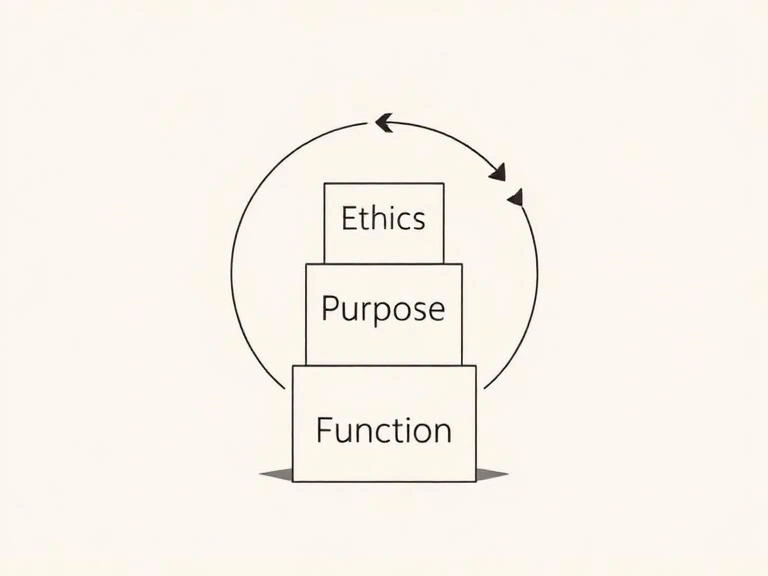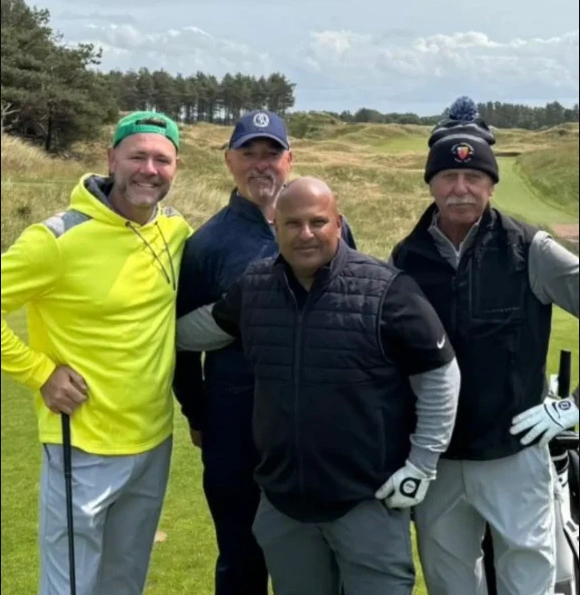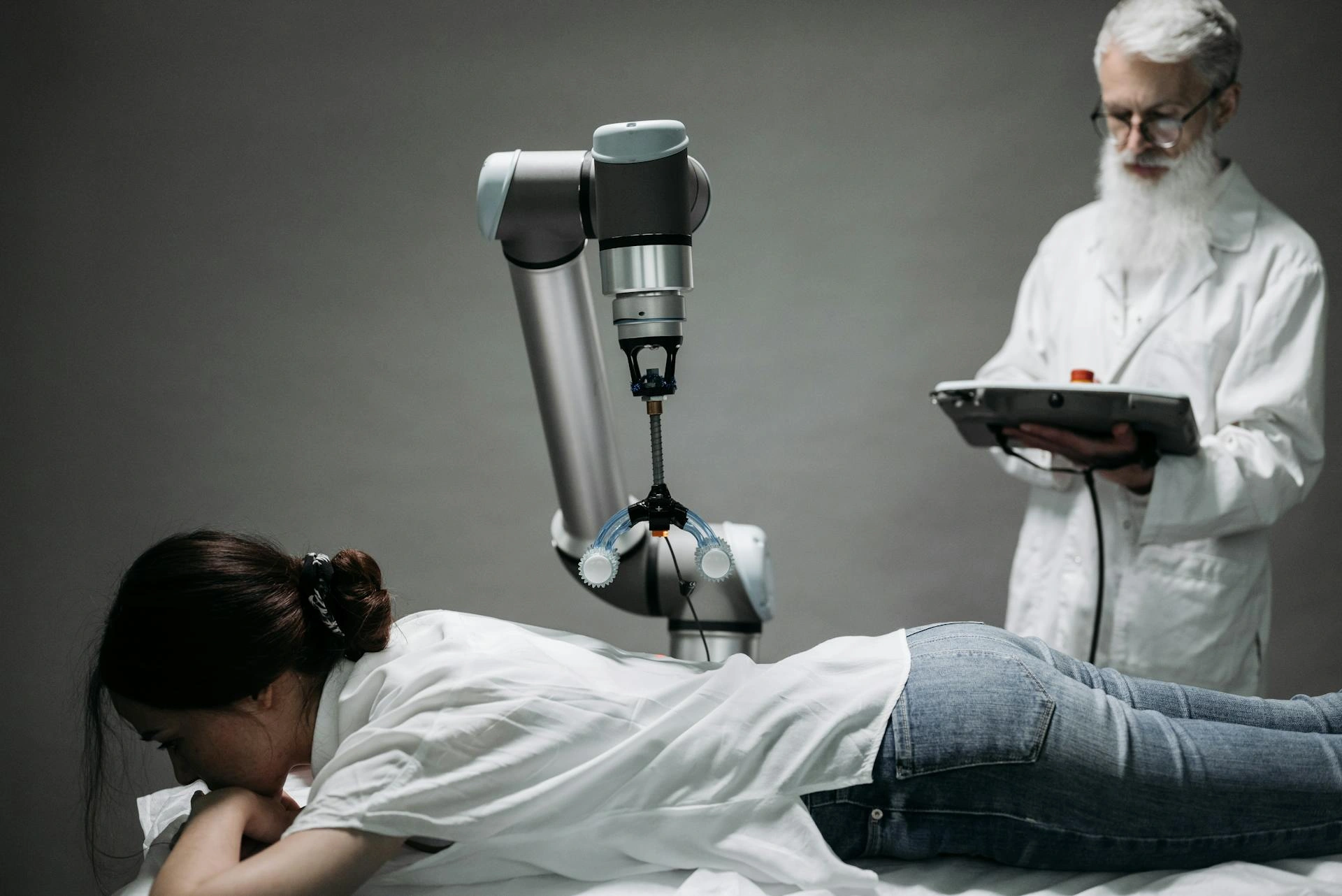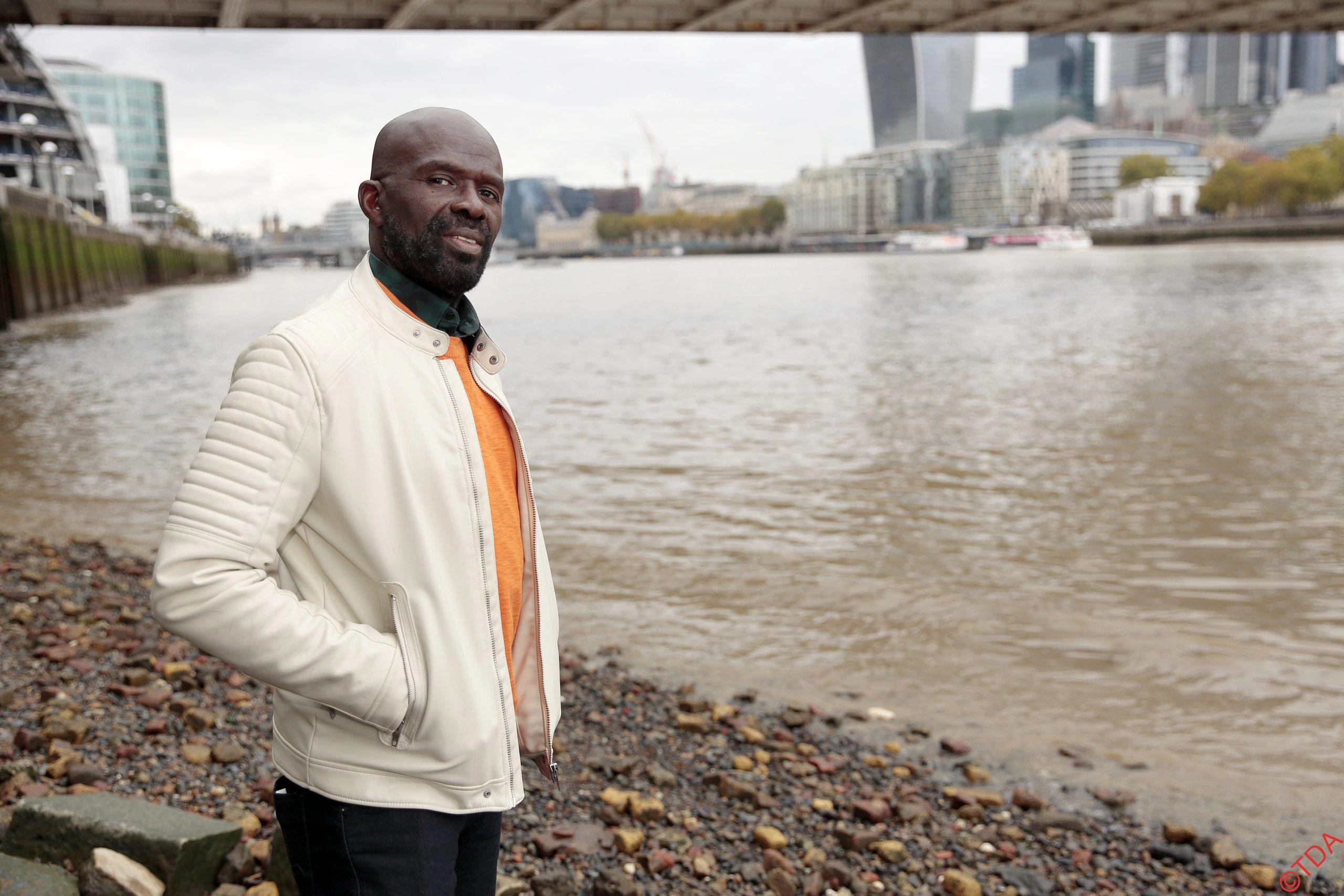AI can’t swim — but it might save those who do

Ben Hooper
- Published
- Opinion & Analysis
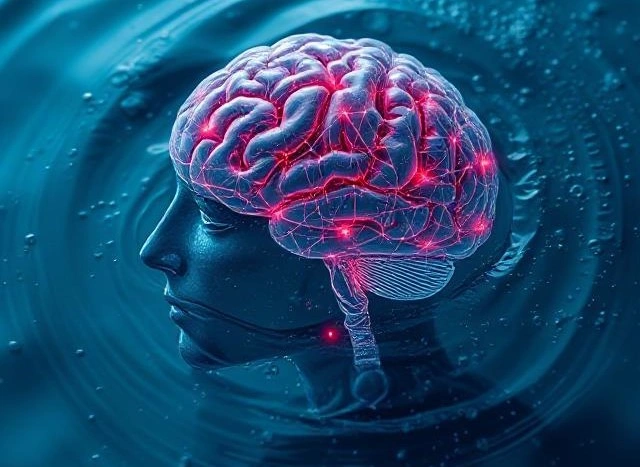
As open-water swimming surges in popularity, endurance athlete and journalist Ben Hooper explores how artificial intelligence is transforming safety, training, and awareness — from lifeguard drones to data-driven goggles — while questioning whether technology can coexist with the soul of swimming
Artificial Intelligence can’t swim, it doesn’t understand the sharp intake of breath when cold water hits your skin, and nor can it feel the silent rhythm of a steady stroke through open seas. But make no mistake, AI is already at the water’s edge, reshaping how we train, how we stay safe, and how we understand what it means to swim at all.
For decades, swimming has been one of the purest expressions of human capability: no wheels, no engines, no equipment beyond budgie-smugglers, costume or a wetsuit, a cap, and a bit of ‘nerve’ covered with goose fat or Vaseline. Yet as technology infiltrates almost every corner of the sport, the pool and the open sea are no longer beyond its reach. The question is not whether AI will change swimming. It is how we will let it. Even, should we let it.
I believe there is a spiritual simplicity in swimming that resists digitisation. To swim is to surrender to the water, to weather, to the limits of your lungs and body. It’s the oldest form of travel and, arguably, the most human. So, the thought of AI stepping into that space can feel almost sacrilegious.
However, more recently, I have come to believe that AI, used wisely, could serve as a quiet guardian rather than an intruder. It’s not about replacing instinct with algorithms but amplifying our awareness. Especially in a world where open-water swimming has never been more popular, or more perilous, as people seek out the extreme and more remote locations to enjoy a little mindfulness or to drive up their Instagram following.
Which, every summer, sees thousands take to our lakes, rivers and seas across the UK and Europe, often inspired by the mental and physical benefits of wild swimming. Yet with that rise has come a tragic increase in drowning incidents. In 2023, the Royal Life Saving Society (UK) reported 226 accidental drownings. A statistic that’s both sobering and avoidable and is almost surpassed, in total sadly, for 2025 before its year-end. However, is this where AI could save lives?
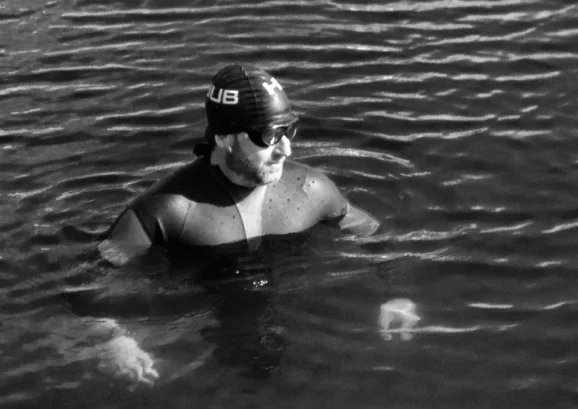
Smarter safety, not just smarter swimmers
Imagine a smartwatch or swim tracker that doesn’t just measure heart rate and distance but actively monitors distress. Using AI pattern recognition, it could detect erratic movement, dysregulated cardiac rhythm, a sudden drop in body temperature or blood pressure, or prolonged QTS wave or long periods of inactivity, in turn automatically alerting lifeguards or emergency services with your GPS location data.
Well, imagine no more. For that technology is already emerging.
Companies such as Garmin and Suunto continue developing wearables that interpret biometric data in real time. Meanwhile, AI-driven apps like SAFER and Drowning Detection Systems (DDS) are being tested in Europe and the USA. They appear to be capable of identifying a swimmer in distress through live video analysis, detecting subtle irregularities invisible to the human eye.
Further, in the open sea, drones equipped with AI image recognition can now scan for swimmers in trouble faster than rescue boats can mobilise. The Israeli company SightBit, for example, uses AI-powered cameras to predict rip currents and spot struggling swimmers instantly. Their technology is already being trialled on Mediterranean beaches. Even smart buoys are being developed to create a kind of ‘digital lifeguard network.’ Linked to cloud-based AI systems, they monitor wave patterns, temperature, and swimmer movements, and may be capable of sending automated alerts to local authorities. In essence, it may be a safety net that never sleeps. But can it be said to be reliable? Tests and trials continue.
Health data meets human intuition
Then there is the quieter, more personal side of AI and how it can make us better swimmers. For example, apps like FORM Swim Goggles and MySwimPro already use AI coaching systems to analyse technique and tailor workouts. They can correct your stroke, flag signs of overtraining, and optimise recovery. Essentially, offering amateur swimmers access to an elite-level coach inside their goggles – at a cost, of course.
This kind of data-driven insight and use of AI is transforming swim performance and may well aid open-water and wild swimming. But it comes with an ethical undercurrent, as does the entire advance of AI. I feel, and although swimming has always been about feel, emotion, nature, and the delicate feedback between body and water, should we come to rely too much on AI, then surely, we risk losing our intuitive relationship with water.
The goal should, therefore, be to enhance human skill, not replace it. Technology must serve the swimmer, not dictate to us. After all, swimming is not just about efficiency. It is about freedom, presence, and that quiet conversation between us, our breath and the water we glide through.
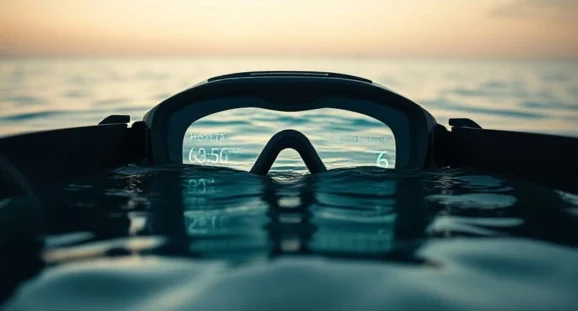
The emotional argument: why the human element still matters
I’ve seen first-hand what happens when confidence meets the unpredictable. During my Atlantic ultra-distance swim in the open ocean, it’s not your smartwatch that gets you through the chop and swells the height of tower blocks. No, it is instinct, experience, and an almost meditative patience. All of which no AI can teach humans. Yet.
But imagine for a moment, if AI could give more people the chance to develop that instinct safely. For example, alerting swimmers before hypothermia sets in, warning of hidden currents, or flagging irregular heart rhythms before they become emergencies. AI may never feel the thrill of a long swim, but it could quietly protect those who do and alert emergency services to come to our aid, in the water. As some technologies appear to be working on, as I write.
However, the ethical challenge in such AI use lies in how we balance privacy and protection. Constant biometric monitoring raises real concerns. For example, who owns the data, how it is stored, and whether every swim becomes just another data point. After all, swimmers value solitude and freedom, and nobody wants to feel surveilled in the name of safety. Do they?
Therefore, transparency and consent will be essential if AI is to guide, assist, and inform swimmers. But the moment it dictates or intrudes, we risk eroding the very thing that makes swimming so powerful: its simplicity.
Yet is simplicity really the central ethical question when it comes to AI use in open-water swimming? Perhaps not. A greater concern may be the illusion of safety that such technology creates. Could AI-driven devices tempt swimmers to go out alone, trusting a gadget to summon help if things go wrong instead of following the oldest rule in my swim book: never swim without support? What happens when the signal drops, the battery dies, or you’re in a remote area with no coverage?
In answering these questions, AI may not just fail to prevent danger, it could inadvertently encourage it. For relying on technology as a safety net in unpredictable waters is as risky as swimming alone without its support. Therefore, do we truly need AI to accompany us in the open-water, or are we simply inviting expensive gadgets to intrude upon the pure, unmediated connection we have with our greatest and most precious element on the planet?
For now, that question remains unresolved as AI is evolving faster than the technology designed to contain it, and while it can help us train, learn, and monitor performance in controlled environments, swimming pools or lifeguarded areas, it will never replace good old-fashioned common sense or the basic human safety principles that have kept swimmers alive for generations.
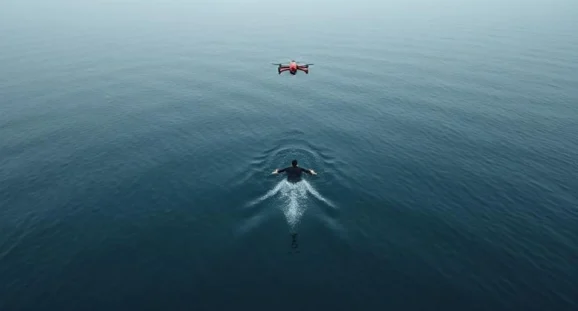
The future horizon
Looking ahead, AI will likely merge with environmental data to make swimming safer still if used appropriately. We’re already seeing predictive algorithms that use satellite imagery to forecast water quality and algae blooms, alerting swimmers before they enter unsafe areas. Therefore, in the not-so-distant future, perhaps AI-driven personal safety devices could become as standard as goggles. Lightweight, waterproof wearables linked to global rescue networks that are thinking as the swimmer moves, develops in fitness or not, and in relation to their environment. Reaching the point where a single tap or triggered drop in blood pressure, or movement, for example, could send your coordinates and biometrics to the nearest emergency responders, even offshore, before you recognise you are in distress.
From my research, it also appears possible that AI has the potential to support swimming education. Virtual reality and machine learning could simulate conditions like rip currents or ‘cold shock’ in training environments, helping new swimmers learn through experience without danger and helping our children to learn to swim, where schools cannot afford to. Given recent government slashed budgets to support national school swimming programmes and swim safety, therefore offering the chance to reduce open-water casualties and deaths.
Further, AI could become a more affordable swim teaching option as it would evolve more effectively with the individual adult or child learner, in groups, than a single swim teacher could achieve overseeing a group of ten-to-fifteen learners in a pool or lake. AI might even one day guide remote lifeguard operations, coordinating drones, sensors, and alert systems across vast coastlines. Something we know the military already has the technology to conduct. For now, though, reality looks rather different. On many beaches, safety still depends on a handful of underpaid university students, a quad bike, and a pair of binoculars. Good and brave individuals doing their best, but physically, often unable to reach the furthest coves or most remote swimmers, in time.
I believe therefore, that if we get this right, AI won’t sterilise swimming. It will democratise it. It could open swimming to more people and safely to more novice swimmers, making open-water less intimidating, safer, especially for beginners or those with medical vulnerabilities.
So… will AI ever swim?
No — not really. Surely it will never feel the calm weightlessness of swimming beneath a blood red sky or bobbing, watching a stunning sunrise, or experience the humbling vastness of a lake at dawn shrouded in mist. But it doesn’t need to. Its purpose in the water is different: to watch, to learn, and to quietly ensure that more of us can experience those feelings and experiences, safely.
Therefore, the magic of swimming will always belong to humans and to the marine life we admire, respect, and sometimes fear, sharing their vast blue world with humility. While we will always have the courage to wade in, to feel the rhythm of strokes through silky water, to dive into crystal blue lakes and see beneath the surface or find that quiet moment of peace that follows effort. AI, for all its intelligence, will never know such feelings.
It may, however, help shape how we approach swimming in the future. How we train, learn, and stay safe but it will never replace the soul of swimming.
And maybe that’s exactly how it should be…
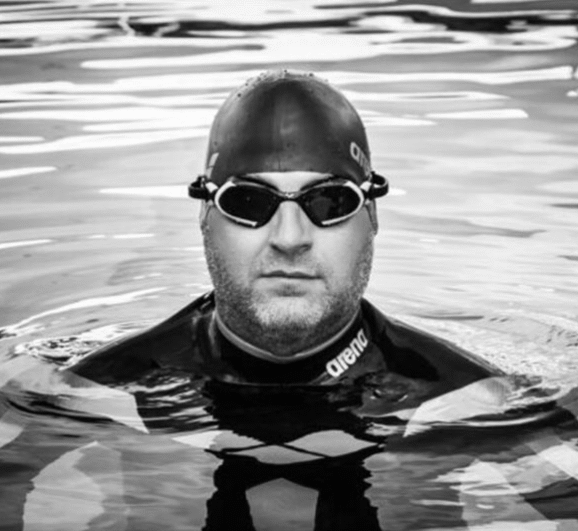
Ben Hooper made global headlines with his bid to swim every mile of the Atlantic Ocean — a challenge Sir Ranulph Fiennes OBE called “the last great bastion to be conquered.” His four-month, 2,000-mile route from Senegal to Brazil, known as Swim the Big Blue, was derailed mid-Atlantic after his support vessel was damaged by storms, despite him surviving a near-fatal encounter with thousands of Portuguese Man O’War. He remains the only person with a WOWSA-verified attempt at the feat. Follow him on Instagram and X @TheBenHooper or via www.thebenhooper.com
READ MORE: ‘Diving into… open water safely‘. In this special instalment of his Diving Into… series for The European, ultra-endurance swimmer Ben Hooper sets aside the romance of wild waters to confront their risks. With 150 years since Captain Webb’s first Channel crossing, he asks why safety still lags behind endurance and what must change to prevent needless deaths at home and abroad.
Do you have news to share or expertise to contribute? The European welcomes insights from business leaders and sector specialists. Get in touch with our editorial team to find out more.
Main image: Conceptual rendering symbolising the meeting of human instinct and machine intelligence in the water — where emotion, data, and decision-making converge.
Sign up to The European Newsletter
RECENT ARTICLES
-
 The digital euro is coming — and Europe should be afraid of what comes with it
The digital euro is coming — and Europe should be afraid of what comes with it -
 Why Greece’s recovery depends on deeper EU economic integration
Why Greece’s recovery depends on deeper EU economic integration -
 Why social media bans won’t save our kids
Why social media bans won’t save our kids -
 This one digital glitch is pushing disabled people to breaking point
This one digital glitch is pushing disabled people to breaking point -
 Japan’s heavy metal-loving Prime Minister is redefining what power looks like
Japan’s heavy metal-loving Prime Minister is redefining what power looks like -
 Why every system fails without a moral baseline
Why every system fails without a moral baseline -
 The many lives of Professor Michael Atar
The many lives of Professor Michael Atar -
 Britain is finally having its nuclear moment - and it’s about time
Britain is finally having its nuclear moment - and it’s about time -
 Forget ‘quality time’ — this is what children will actually remember
Forget ‘quality time’ — this is what children will actually remember -
 Shelf-made men: why publishing still favours the well-connected
Shelf-made men: why publishing still favours the well-connected -
 European investors with $4tn AUM set their sights on disrupting America’s tech dominance
European investors with $4tn AUM set their sights on disrupting America’s tech dominance -
 Rachel Reeves’ budget was sold as 'fair' — but disabled people will pay the price
Rachel Reeves’ budget was sold as 'fair' — but disabled people will pay the price -
 Billionaires are seizing control of human lifespan...and no one is regulating them
Billionaires are seizing control of human lifespan...and no one is regulating them -
 Africa’s overlooked advantage — and the funding gap that’s holding it back
Africa’s overlooked advantage — and the funding gap that’s holding it back -
 Will the EU’s new policy slow down the flow of cheap Chinese parcels?
Will the EU’s new policy slow down the flow of cheap Chinese parcels? -
 Why trust in everyday organisations is collapsing — and what can fix it
Why trust in everyday organisations is collapsing — and what can fix it -
 In defence of a consumer-led economy
In defence of a consumer-led economy -
 Why the $5B Trump–BBC fallout is the reckoning the British media has been dodging
Why the $5B Trump–BBC fallout is the reckoning the British media has been dodging -
 WPSL Group unveils £1billion blueprint to build a global golf ‘super-group’
WPSL Group unveils £1billion blueprint to build a global golf ‘super-group’ -
 Facebook’s job ads ruling opens a new era of accountability for artificial intelligence
Facebook’s job ads ruling opens a new era of accountability for artificial intelligence -
 Robots can’t care — and believing they can will break our health system
Robots can’t care — and believing they can will break our health system -
 The politics of taxation — and the price we’ll pay for it
The politics of taxation — and the price we’ll pay for it -
 Italy’s nuclear return marks a victory for reason over fear
Italy’s nuclear return marks a victory for reason over fear -
 The Mamdani experiment: can socialism really work in New York?
The Mamdani experiment: can socialism really work in New York? -
 Drowning in silence: why celebrity inaction can cost lives
Drowning in silence: why celebrity inaction can cost lives






